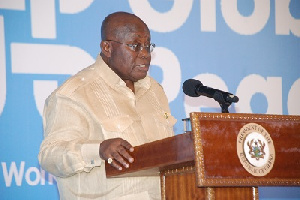Fuel prices to hit GH¢7 per litre – IES predicts

Fuel prices in Ghana are likely to hit GH¢7 per litre as pump prices are expected to be increased between GHp30 to GH40 per litre, the Institute of Energy Security (IES) has predicted.
The increase is coming on the back of the 7.42 percent increase in the price of Brent crude, the 9.46 percent increase in price of Gasoline, the 8.52 percent increase in Gasoil price and the 0.3 percent depreciation of the local currency against the US dollar.
The imminent price increases may force some Oil Marketing Companies (OMCs) across the country to sell Gasoline and Gasoil at GH¢7.00 per litre at the pumps for the first time, the IES warned in its projection for the January 2022 second pricing window.
Prices of fuel at local pumps across the country have already seen increments within the previous window under assessment. Petroleum product prices per litre rose from GH¢6.50 on average at most pumps to reach GH¢6.70 within the window under review.
That increment was occasioned by a rise in prices on the international market despite government’s extension of the suspension of the Price Stabilisation and Recovery Levy (PSRL) on the petroleum price build-up (PBU). The majority of the Oil Marketing Companies (OMCs) increased their prices at the pump by 2-3 percent. The current national average price for both products is pegged at GH¢6.70 per litre, representing a 3 percent increase over the previous window.
Surprise rise
In the just-ended Pricing-window, however, the international benchmark Brent saw a price-rise within the period, with prices selling on average at roughly US$80.3 per barrel. The price increment represents a 7.42 percent rise from the previous window’s average price of US$74.75 per barrel.
“Oil prices beginning January 2022 started off on a positive note for oil price bulls, with prices beginning the year on first trading day of the year – January 3, 2022 – at US$78.98 per barrel and rising to over US$84 per barrel in less than 10 days, representing a rise of about 6.7 percent. Interestingly, the oil market has been bereft of any major market volatilities in the just-ended pricing window – as had been the case in windows past.
“Of all the major happenings, the OPEC+ meeting held on the 4th January 2022 stands out as the most conspicuous industry event in the just-ended window that had the propensity of shaking-up the market. The meeting concluded with a resolution to stick to the planned output of 400,000 barrels per day,” said Fritz Moses, Research Analyst at IES.
Contributing to the upward price swing were the partial supply disruptions from the Libyan supply, as well as the Ecuadorian supply. The situation was met by a robust demand that has been exceeding market expectations, Moses explained.
“This was following the onset of the Omicron variant and its expected impact on economic activities and energy demand. That has not been the case, as the impact has been minimal compared to what was was expected.
“There are concerns, also, on the widening OPEC+ production quotas as against the actual production figures from the wells of member-countries.
“Out of the 18 countries that make up the alliance, 14 were unable to meet their production quotas for December 2021; resulting in the drawdown of production figures for the month. As a result, the total additional supply made by the alliance was 310,000 barrels per day as against the planned 400,000 barrels per day,” he stated.
The price of refined products – Gasoline and Gasoil prices as monitored on Standard and Poor’s (S&P’s) global Platt’s platform – recorded significant changes within the period under review. While the price of Gasoline increased by 9.46 percent to close the window at US$774.94 per metric tonne, price of Gasoil also increased within the period by 8.52% to close trading at US$696.00 per metric tonne from its earlier price of US$641.38 per metric tonne.
Source: thebftonline.com






